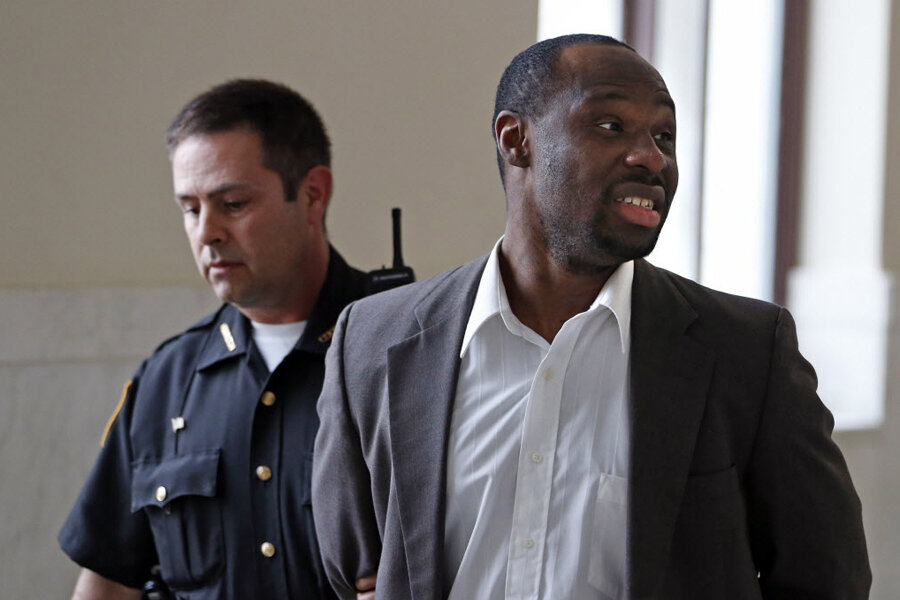David Chandler trial: Ohioan to appeal case hinged on dying man's blinks
Loading...
| CINCINNATI
The man convicted in a murder trial that hinged on a paralyzed victim blinking his eyes to identify his shooter plans to appeal, a defense attorney said after the verdict.
A jury on Thursday found Ricardo Woods guilty of murder and felonious assault for the death of David Chandler, who was shot Oct. 28, 2010, while sitting in a car in Cincinnati.
Woods, 35, had no obvious reaction as the verdict was read on the third day of jury deliberations but later said "I'm innocent" as he was led to jail. Sentencing is scheduled for June 20, and he could face up to life in prison.
Chandler's half-brother, Richard Tucker, said in a telephone interview that Chandler's family was "happy that justice has been served" and that the verdict helps ease their pain and grief.
"It's been a long time coming," said Tucker, 50, of suburban Cincinnati.
Police interviewed the 35-year-old Chandler after he was shot in the head and neck. He was only able to communicate with his eyes and died about two weeks later.
During the trial, jurors viewed the videotaped police interview that prosecutors say showed Chandler blinkedthree times for "yes" to identify a photo of Woods as his shooter. The defense had tried to block the video, saying Chandler's blinks were inconsistent and unreliable.
Defense attorney Kory Jackson said Thursday he expects the video will play a part in Woods' appeal.
"We have said since the beginning that the video should not have been allowed into evidence," Jackson said.
He had argued that Chandler's condition and drugs used to treat him could have affected his ability to understand and respond during the police interview.
Judge Beth Myers, who ruled that jurors could see the video, had noted that Chandler's identification was made by pronounced, exaggerated movement of the eyes. A doctor who treated Chandler later testified that Chandler was able to communicate clearly about his condition.
In the video, police had to repeat some questions when Chandler failed to respond or when the number of times he blinked appeared unclear. But Chandler blinked his eyes hard three times when police asked him if the photo of Woods was the photo of his shooter. He again blinked three times when they asked him if he was sure.
The defense also had argued that showing Chandler only one photo — that of Woods — instead of presenting a lineup of photos was "suggestive." Jackson said the case against Woods was about misidentification and "a misguided investigation."
Jocelyn Chess, an assistant county prosecutor, said jurors made the right decision.
"They looked at all the evidence, and the evidence showed that Ricardo Woods was guilty," she said.
A jailhouse informant testified that Woods told him he shot at Chandler because he caught him buying drugs from someone else while still owing Woods money for drugs.
The defense argued that the informant, who faced armed robbery charges, was trying to use testimony against Woods to get a lighter sentence for himself. The defense also said Chandler had stolen drugs from dealers, was considered a police "snitch" and had many enemies.
The defense insisted that Woods was a victim of misidentification and misinformation.
Legal experts say such cases — where prosecutors attempt to show a defendant was identified by a gesture — are not unheard of but are unusual. Dying identifications relying on gestures rather than words are often not used in trials because of concern over reliability or differing interpretations. But some have been used in murder cases around the country that have ended in convictions.







